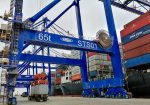A key catalyst for domestic tourism growth is the expected third 25 bps rate cut by the Bank of Namibia in December 2024, following two earlier 25 bps cuts this year, research experts, Simonis Storm have said.
This additional reduction is likely to further lower borrowing costs, making travel more affordable for local consumers.
“As a result, we anticipate a boost in domestic tourism, particularly as the festive season coincides with lower interest rates, offering an opportunity for Namibians to travel more affordably,” Simonis Storm said.
Namibia’s tourism sector continued to demonstrate resilience in September 2024, with a diverse mix of regional and international visitors contributing to the positive outlook. European tourists remained the largest group, increasing their share to 71.8% from 67.3% in September 2023. This growth highlights Namibia’s ongoing appeal as a premier destination for European travellers, reinforcing the need for tailored marketing strategies and services to cater to this key demographic.
Leisure travel continues to dominate the sector, presenting opportunities for further infrastructure development to enhance the visitor experience and sustain long-term growth. With the festive season approaching, we expect an increase in domestic and SADC visitors, particularly in the Northern and Coastal regions. Strategic promotional campaigns aimed at maximizing this seasonal influx will be crucial to boosting occupancy rates during this peak period.
“To capitalize on this momentum, the tourism industry, along with government support, should streamline visa processes and focus on providing high-quality services to remain competitive, particularly as new visa requirements are introduced in key markets. By addressing these logistical challenges and ensuring smooth access for international visitors, Namibia can continue to thrive as a sought-after destination amidst global economic and geopolitical uncertainties,” Simonis Storm said.
The Coastal region posted the highest occupancy rate in September2024at74.45%, likely buoyed by a series of social, sporting, and leisure events throughout the month, including the popular annual sports marathons and regional festivals. Conversely, the Central region recorded the lowest rate at 43.89%, despite hosting several significant international and domestic sporting events. This anomaly may reflect tourists’ preference for the coastal and rural areas, which offer more varied leisure experiences compared to the urban centres in the Central region.
Local travel experienced a notable decline, with Namibian visitors occupying fewer establishments, dropping from 17.5% in August to 14.6% in September 2024. This downward shift suggests possible challenges in the domestic tourism sector, perhaps linked to seasonal factors or a shift in travel preferences. On the other hand, South African tourists showed increased activity, with their share rising from 3.7% to 5.5% in September, reflecting a growing interest in Namibia’s attractions during this period.
Visitors from the rest of Africa also experienced a slight drop, settling at 0.4% in September. In contrast, European tourists, who have consistently dominated Namibia’s tourism market, saw a further increase from 70.3% in August to 71.8% in September. This trend could indicate a recovery in European travel post-summer or a reflection of Namibia’s appeal during the late summer and early autumn months in Europe. European travel tends to show strong seasonal patterns, and Namibia remains a key destination due to its relatively stable environment and natural attractions.
Other regions showed mixed trends. The Middle East saw a small decline, dropping from 0.26% to 0.1%. This may reflect changing political and economic conditions affecting outbound travel from this region. Meanwhile, Asian tourists increased from 1.69% to 1.9%, a sign that Namibia is slowly attracting more visitors from this growing market. South America’s share fell from 0.63% to 0.3%, possibly due to fewer direct connections or economic constraints in that region. North American visitors saw a slight rise from 3.68% to 4.4%, a positive sign that Namibia remains an attractive destination despite global economic uncertainty. Visitors categorized as coming from the rest of the world showed a small uptick, increasing from 0.55% to 0.9%.
“These figures suggest that Namibia’s tourism sector remains dependent on European visitors, while the shifts in other regions indicate varying degrees of interest. According to the CEO of the Hospitality Association of Namibia (HAN), “the slight decline in the third quarter could be linked to major international sporting events in Europe during August.” While these events may explain some of the fluctuations, we will need to consider broader factors, including rising flight costs, stricter visa regulations, and global political dynamics, such as the Middle East crisis. There is also growing concern about increasing local crime rates, which could deter tourists if not managed effectively. As we await the full results for 2024, these factors will likely shape the outlook for Namibia’s tourism industry in the months ahead,” said Simonis Storm.










